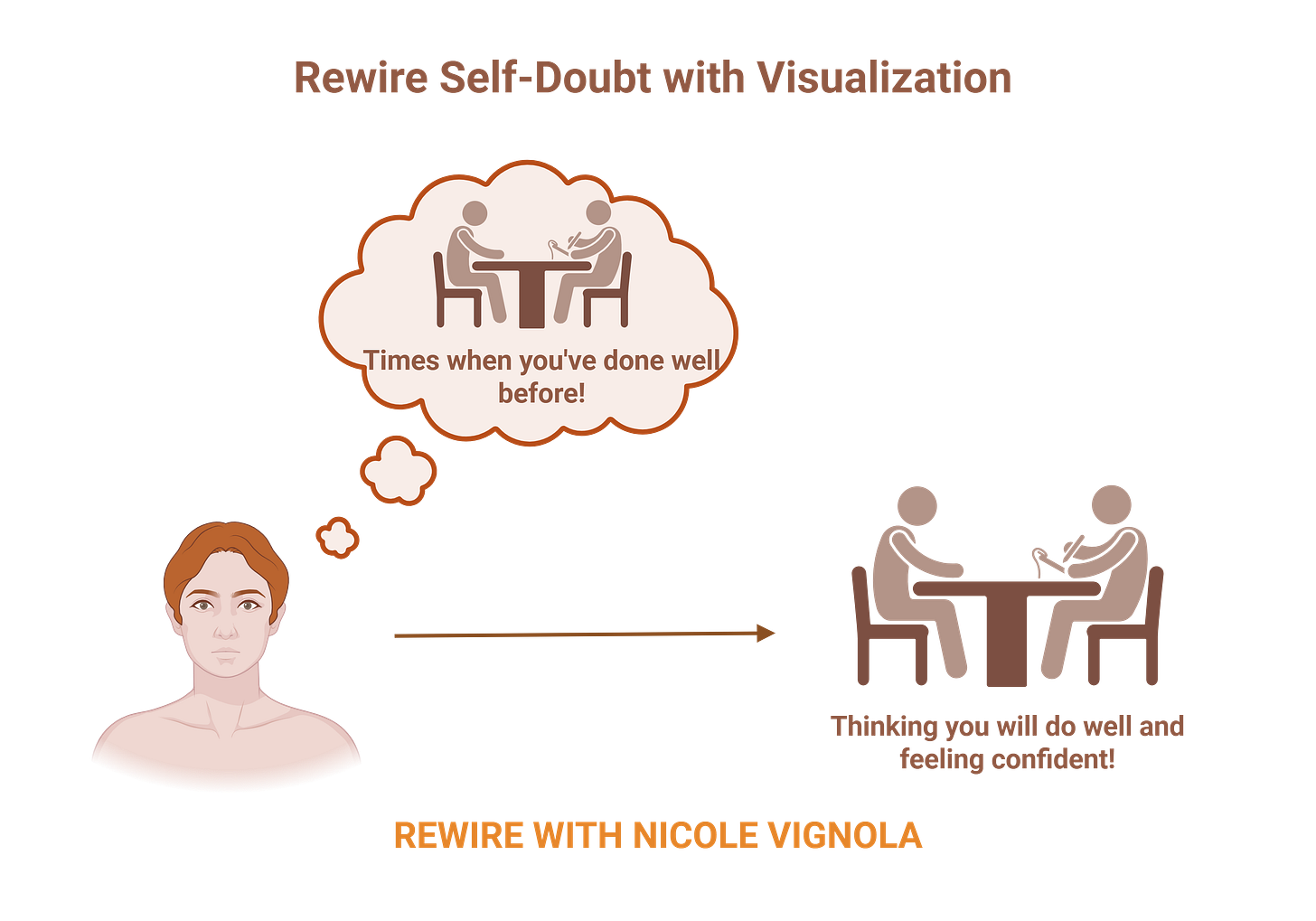Hey Rewire Collective!
Welcome to this week’s newsletter! We’re diving into how we can rewire our thinking to eliminate self-doubt.
Let’s talk about that voice in your head. You know, the one that says, “You’re not ready,” or “You’ll probably fail.” It sounds familiar, because it is familiar. Our brains are wired to return to what we know, even when what we know is self-doubt.
So how do we interrupt the spiral of self-doubt before it takes over?
We retrain it! And one of the most powerful tools we have is visualization.
And if you want more on this topic, check out my YouTube!
What is Visualization?
Visualization (also known as mental rehearsal or imagery) is the act of intentionally imagining a specific event, task, or moment in rich detail, without physically doing it. It’s structured, evidence-based cognitive training. And it’s used by top athletes, surgeons, musicians, and people just like us to improve performance and change internal narratives (1).
When we visualize an action, our brain activates the same neural circuits used during the real action (2). That means we can practice and get better without moving a muscle (4, 6).
Why We Default to Doubt
Our brains are biased toward the negative. It’s called the negativity bias, and it evolved to help us survive threats. However, it doesn’t distinguish between life-threatening survival situations and modern-day challenges like pitching an idea or setting a boundary. This bias means we’re more likely to believe something will go wrong than to remember when things actually went well.
To make it worse, our thoughts follow well-worn paths. In neuroscience, we say: “Neurons that fire together, wire together.” (3)
So if you repeatedly think “I’m not good enough,” your brain gets more efficient at activating that thought. But the good news? We can rewire these patterns.
Using Visualization to Rewire Self-Doubt
Visualization helps break the cycle of doubt by:
Reinforcing neural pathways tied to confidence and success
Retraining your inner critic with evidence from your own life
Creating a sense of familiarity with success

Try This:
Picture the situation you’re anxious about: a job interview, a tough conversation, an audition.
Visualize it going well. Not perfectly, just well. See yourself calm, prepared, and capable.
Engage all your senses. What do you see? Hear? Feel? Smell? This increases neural engagement (4).
Talk to yourself like you’d talk to a friend. If your best friend were nervous, would you say, “You’re going to fail”? Or would you say, “You’ve done hard things before. You can do this too”?
Remind yourself of your evidence. Visualise real moments when you’ve succeeded before, even small ones. This helps override the negativity bias (5).
And Remember, Your Thoughts Are Not Always Facts
When self-doubt shows up, ask yourself:
Is this thought true?
Is it helpful?
Or is it just familiar?
You don’t need to believe every thought your brain offers you.
Especially the ones it repeats just because it always has.
Until Next Week,
Nicole x
P.S. Leave a comment with requests for future newsletters!
References




So simple, yet very often forget to do. Would you use this when you have a ‘block’ e.g. want to get back into a daily home yoga practice… but feels linked to a difficult time so I can’t seem to get started